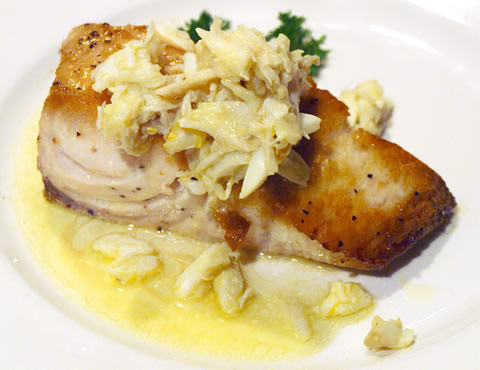
Our annual survey of seafood in Southeast Louisiana this year counts down the 33 best seafood species enjoyed in our restaurants, seafood markets, and homes. For the full survey so far, click here. Or use the links at the bottom to move up and down the list.
#26: Amberjack

The large family of fish known as the jacks range from excellent (pompano) to terrible (jack crevalle). Amberjack is about in the middle of that range. It's a nice off-white fish, with enough fat to give it an interesting flavor, but not so much as to make it taste strong or oily.
Amberjack lives all over the Gulf, but it's most popular in Florida. We didn't see it often in New Orleans until commercial redfish and trout were all but shut down in the mid-1980s. Some chefs liked amberjack; others didn't. To this day, a restaurant either serves amberjack all the time or hardly ever.
The reason for this may be the inconsistency of goodness from one amberjack to another. The smaller fish are beyond reproach, but the bigger an amberjack is, the worse it gets. Past a certain large size (and they can grow to over 100 pounds), amberjack may even be poisonous.
Whenever I'm offered amberjack, I ask questions. How is it cut? Fillets will probably be good, unless they're very thick. Steaks are out of the question.
The most common preparation of amberjack is grilled. It stands up nicely to the heat, and takes a good Creole seasoning as well. If you have a fillet of eight to ten ounces, you could blacken it to good effect.
Back when amberjack just started appearing in restaurants, Chef Roland Huet put some into his cold-smoking pit at Christian's. The results were so fine that whenever amberjack comes my way, at least a bit of it winds up in a slow-smoking situation on my Big Green Egg. It's great that way, hot or cold. Even works as a smoked fish for breakfast.